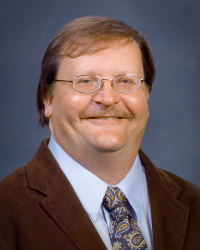 |
|
Conference Home
 Keynote Speaker
Keynote Speaker
Keynote Address
|
Bryan Palaszewski NASA Glenn Research Center Cleveland, OH
Abstract:
Electromagnetic launchers and accelerators have a potential niche in several important systems concepts: Earth launch to orbit, in-space transportation of large payloads and objects (asteroids, etc.), and lunar industrialization. The NASA presentation will provide an overview of the broad range of advanced concepts and focus on the important electromagnetic propulsion options within that broad context.
Biography:
He currently leads work related to human Mars entry, descent, and landing (EDL) where rocket deceleration is planned for the final descent to the planet's surface. He is also investigating outer planet atmospheres and the challenges and benefits of mining them for future space missions. A recent focus of his research is in nanoparticle metal additives for gelled liquid fuels, and solid hydrogen for atomic propellants. He recently led the Fire Prevention - Accident Mitigation aspects of the NASA /FAA Aviation Safety Program, investigating ways of making aircraft and their fuels safer. In 1996, he led the NASA Small Business Innovation Research (SBIR) special topic for commercializing safer, denser propellants. In 1995, he led a team to plan the testing of a 1500 pound thrust Oxygen/Hydrogen windowed rocket engine with laser-based measurements of injector and combustor mixing. For six years, he led many studies of advanced space systems for orbital and interplanetary travel at the Jet Propulsion Laboratory, Pasadena, CA. He was also the lead propulsion subsystem engineer on the Ocean Topography Experiment (TOPEX) for three years, as well as being involved other flight projects such as the Galileo Mission to Jupiter and the Cassini Mission to Saturn. He holds a Master of Science Degree in Mechanical Engineering from the Massachusetts Institute of Technology and a Bachelors Degree in Mechanical Engineering from the City College of New York. He has received the AIAA Sustained Service Award in 2004, and was chair of the AIAA Nuclear and Future Flight Propulsion Technical committee for 3 years.
Bryan Palaszewski
SBIR Fuels and Space Propellants Web Site : https://sbir.grc.nasa.gov/launch/foctopsb.htm |

